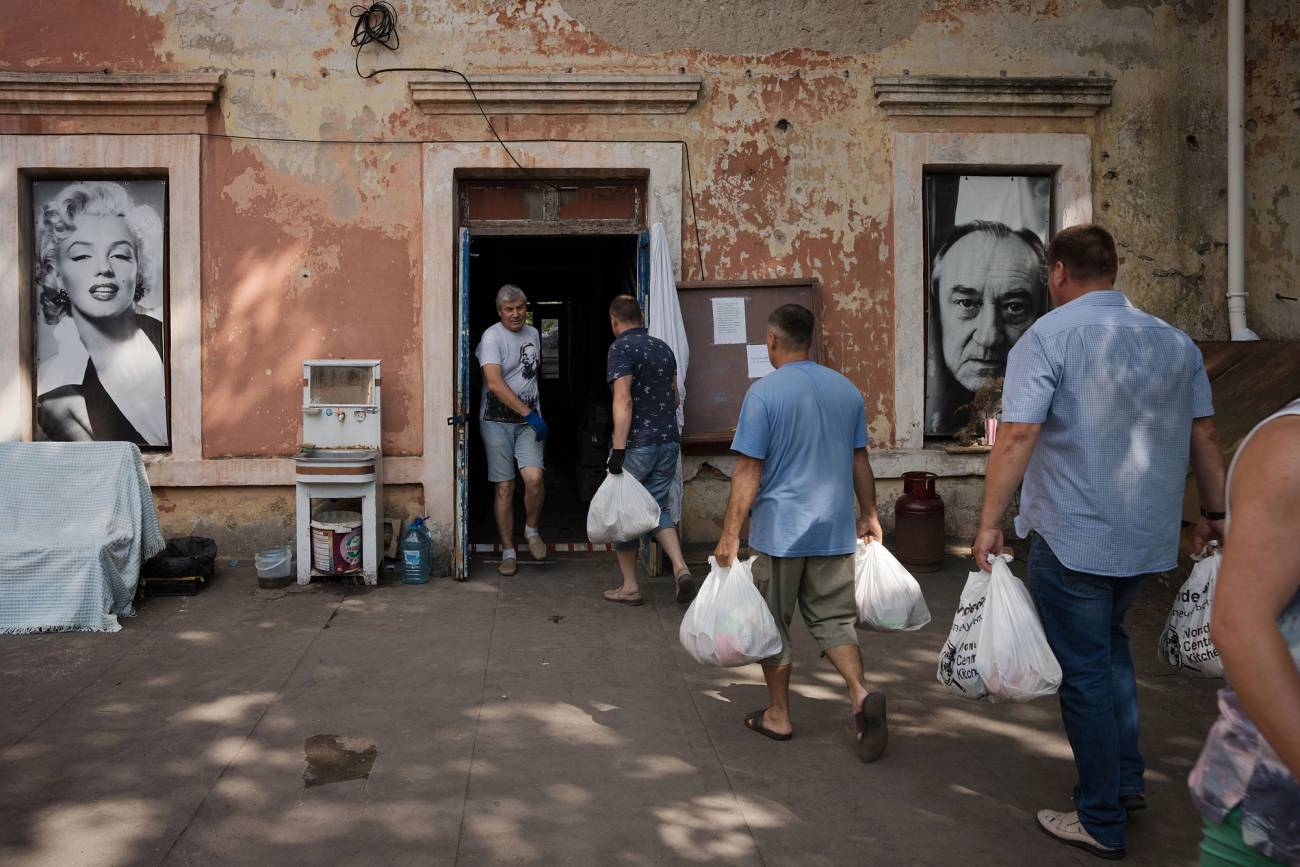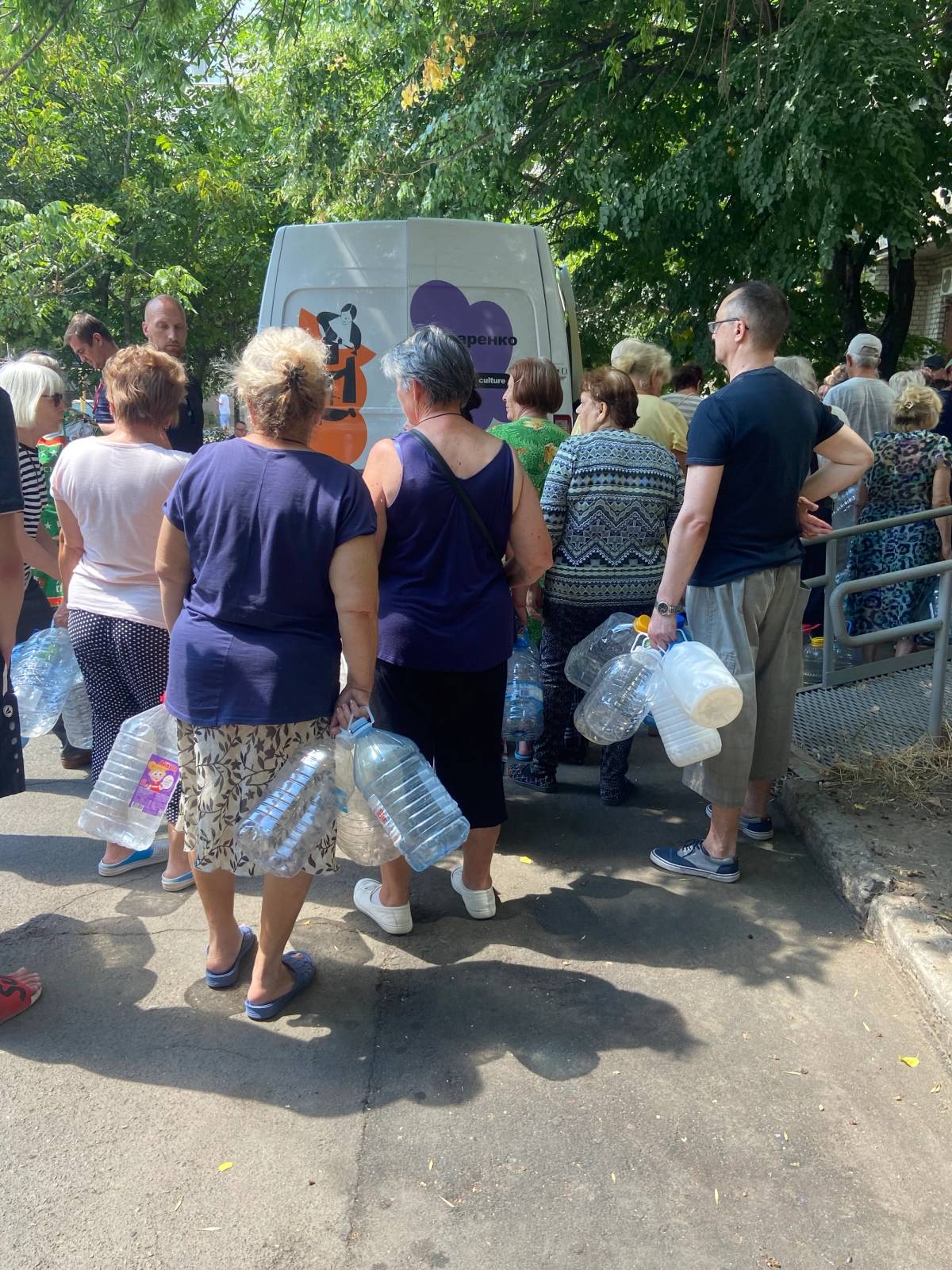War Crimes and Fashion Shoots
Bearing witness to an increasingly brutal and surreal war in Odessa and Mykolayiv



Even by the ghastly standards of Russia’s war on Ukraine, the past two weeks have been truly horrific. The latest string of atrocities, war crimes, and political assassinations, however, got off to a rather harmless start with a minor fashion magazine-inspired kerfuffle. My neighbor in Paris and international woman of mystery Rachel Donadio had travelled to Kyiv in order to pen a sensitive profile of the Ukrainian first lady, Olena Zelenskaya, for Vogue. In the profile, the Zelenskys opened up the presidential administration to readers for the first time, giving a glimpse of their often fairy tale-seeming marriage while speaking openly about the war.
President Volodymyr Zelensky wore his customary olive military T-shirt for what turned out to be an infamous fashion shoot. The first lady dressed in chic outfits by contemporary Ukrainian designers. Zelensky held his wife lovingly. The celebrity photographer Annie Leibovitz snapped the photos—and promptly caused an international furor that threatened to overshadow the war, however momentarily. To any fair observer, the magazine spread itself was somewhere between authentically tender and refreshingly frivolous, given the context of an ongoing genocidal war.
But the photoshoot was quickly and roundly—and to this critic’s ear, maliciously—criticized by internet scolds. There was a noticeable dose of resentment directed at the celebrity Ukrainian president embracing his glamorous wife in the pages of an elegant fashion magazine as the American taxpayer continues to send huge amounts of money and weaponry to Ukraine. Some foreign critics felt the photographs taken of the first lady in front of the destroyed Antonov An-225 Mriya airplane at the Hostomel airport were gauche. Some Ukrainians felt that the pose in which Leibovitz snapped the first lady for the cover—sitting with her legs apart and her elbows resting on her knees—seemed too masculine. Manspreading does not exist as a concept in Ukraine, but it was understood that this was all for international consumption.
Numerous Ukrainian women—including many members of the reformed Kyiv police and armed forces—promptly took to social media to defend the first lady as well as the very honor of Ukrainian womanhood. Several more Ukrainian women posted photos of themselves emulating the first lady’s now infamous pose on their social media accounts. Ukrainian partisans of the president argued the Zelenskys were merely doing what was needed in order to keep the war in front of a fickle Western news cycle. “I saw my piece and Annie Leibovitz’s indelible photos as a way to call attention to the larger situation for a global audience that might not have been micro-following every incremental development,” Donadio told me after the surprising backlash began. “Vogue is a tremendous platform. The piece was translated into multiple languages.”
“The image aspect of the war is a real front,” Donadio continued. “There is the military frontline and there is also the battle for international opinion and for domestic morale, and Zelenska is a key part of that. Her look and clothes are important.”
I spent the last two weeks in my familial hometown of Odessa, anxiously awaiting news about negotiations over the creation of a humanitarian shipping corridor that would allow the release of international grain shipments from the port. My usually carefree and hedonistic city had been noticeably militarized and economically impoverished by the Russian blockade, and the continuous Russian bombing across the south of the country became incessant. The strikes were especially brutal in Mykolayiv—where nightly bombardment by Russian S-300 rockets took place each hour on the hour.
On July 22, a shaky deal was finally inked in order to allow for the export of the Ukrainian grain that had been stuck inside of grain elevators and foreign-flagged cargo ships. Kyiv, Moscow, and the United Nations made the deal in painstaking negotiations conducted discreetly in Turkey over several months.

The Ukrainians nervously waited for most of the following week to see if the Russians would follow through on their end of the bargain: It had been five months since residents of Odessa had seen the sight of a ship leaving the port laden with grain. In the meantime, Russian cruise missiles continued to descend on port infrastructure and to terrorize inhabitants of the region. Finally, and thrillingly, a tanker carrying 26,000 tons of grain moved out of the Odessa port last Monday. The deal has only allowed a token few Ukrainian ships to leave so far, but it seems the widely feared famine in those parts of Africa and the Middle East that depend on the import of Ukrainian grain will be averted for the time being.
At the same time, Russia’s slow tactical advances in the south and east of Ukraine have been stalled by the Ukrainian army and the delivery of new U.S. long-range artillery. The Russians have thus begun to change their tactics in order to escalate the intensity of violence and terror against the population. One example was the recent assassination of leading agricultural businessman Oleksiy Vadatursky and his wife. What the murder of a Ukrainian grain tycoon might mean for the grain deal remains to be seen.
The well-liked and prominent Vadatursky had been featured on the cover of most every Ukrainian magazine, and his death struck deep into the hearts of the Ukrainian business community and civil society. Last Sunday, Ukrainian media and social channels were full of prominent citizens mourning a member of the country’s elite who had decided to remain with his friends, family, and employees in his home city even as it was being bombarded from the air. After the assassination, former Canadian Ambassador to Ukraine Roman Waschuk aptly wrote:
In my time in Ukraine, I’ve met a lot of business leaders. Oleksiy Vadatursky was the only one to come and pick me up in a utilitarian white Skoda Octavia. He was a man driven to achieve, not consume. In agriculture, shipping, shipbuilding and international trade. Building his company, Nibulon, step by step, and always powering on to new levels. He was proud to show me his first domed grain port terminals - Canadian-designed and financed by EDC - paid off on time and to the last penny. This same grain terminal was the first to be attacked as part of Russia’s diabolical plan for strategically starving the world’s most vulnerable. And now they came after the man who made Ukraine a global grain player, and mobilized the Mykolayiv/Kherson region to combat both COVID and the much deadlier Russian menace. Clearing the South of Moscow’s cowardly killers would be the best way to commemorate Oleksiy Vadatursky.
Then, over a single weekend, Ukrainian society was further brutalized by the revelation of a pair of horrific warcrimes. First, a graphic video of a Russian soldier mutilating the body of a Ukrainian prisoner of war was made public. The Russian soldier, wearing a cowboy hat and blue surgical gloves, castrated the bound Ukrainian POW. I heard stories of Ukrainians spontaneously crying in the streets and openly sobbing in cafes after having seen the video.
On the same day, a Russian military prison and filtration camp in the town of Olenivka, located just a few miles from the front line, was bombed in an operation that the Russians promptly blamed on Kyiv. The prison had been holding hundreds of Ukrainian members of the Azov Battalion who had surrendered after having been extracted from the Azovstal steel plant in Mariupol. The Russians had released a list of at least 50 dead and 75 wounded Ukrainian servicemen (not a single Russian prison guard or serviceman seems to have been killed in the blast) while pictures taken in the aftermath of the blast showed the disfigured bodies of Ukrainian troops charred in their beds.
The ritual, filmed castration and mass execution of Ukrainian POWs constituted a brutal and very direct message to the Ukrainian population and armed forces. Many Ukrainians have vowed to fight on even harder, and numerous servicemen have vowed in public never to be taken alive. At the same time, many will doubtless have taken quiet note of what resistance to Russian aggression ultimately entails. In response, the Ukrainians (largely with the support of the U.S. Congress) have put pressure on the U.S. State Department to list Russia as a terrorist state, which Secretary of State Antony Blinken has so far resisted.
Alas, I can’t get out of my mind the images of last week, when I spent hours watching old women in Mykolayiv queuing up, jostling for deliveries of potable water. The city is a couple hours’ drive from Odessa and has been bombed virtually every night for the last four months. The Russians have destroyed the central water supply, requiring volunteers from Odessa to drive water into the town on a daily basis. The water that comes out of the taps, I discovered, tastes of salt and steel.
Vladislav Davidzon is Tablet’s European culture correspondent and a Ukrainian-American writer, translator, and critic. He is the Chief Editor of The Odessa Review and a Non-Resident Fellow at the Atlantic Council. He was born in Tashkent, Uzbekistan, and lives in Paris.